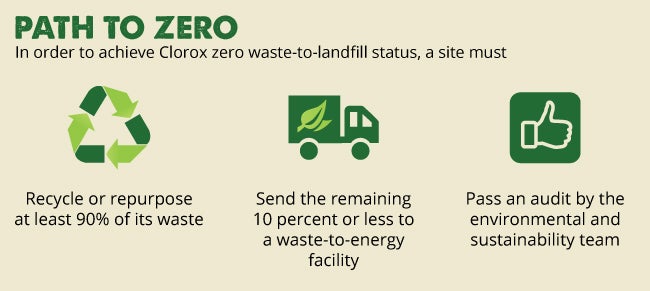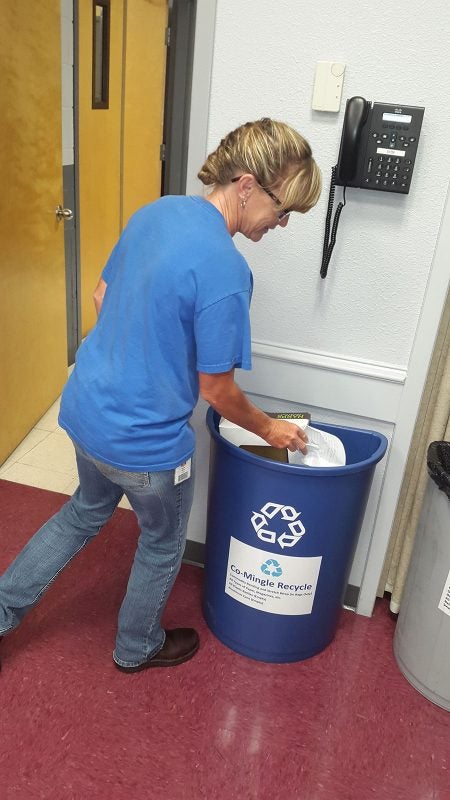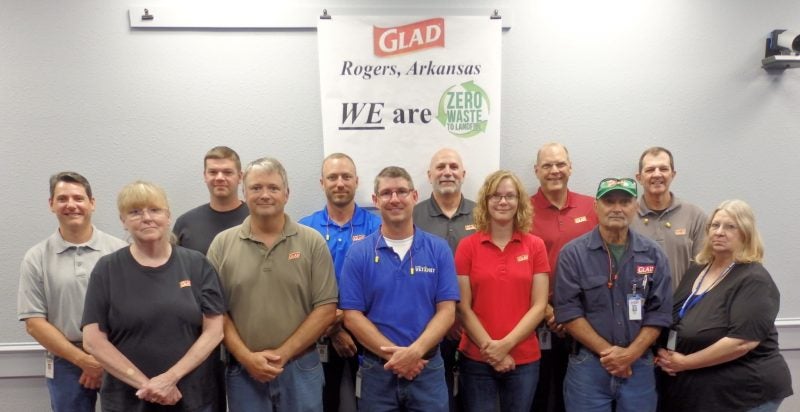Glad® Rogers Plant: The Hero of Zero
By Steve Clarke
The Glad® plant in Rogers, Arkansas, has become the third Clorox facility to achieve zero waste-to-landfill status.
This is a significant milestone to achieving our 2020 Strategy sustainability commitment of having 10 zero waste-to-landfill sites by 2020. Rogers joins our Glad plant in Orangeville, Canada and our Cleaning plant in Fairfield, California, in being able to claim zero waste-to-landfill status.

The criteria for a facility to achieve Clorox “zero waste-to-landfill” status.
This is the culmination of a journey that has taken several years.
It started back in 2014, when Rogers — the largest of all Clorox Company plants — partnered with a local recycling company to improve its recycling program.
“Several of us at Rogers were passionate about recycling, so we felt it was important to set up an Eco Team and lead the zero-waste effort at the plant,” says Lynne Mann, Rogers Eco Team Lead.
A custom approach
The Rogers team implemented several unique approaches to increase its diversion rate and get to zero.
“Our recycling vendor helped us identify new recycling streams, such as changing over to recyclable brown paper towels in the break rooms and restrooms,” says Lynne. “They also helped us recycle more effectively with suggestions like posting better signs so we didn’t send as much recyclable waste to the Waste to Energy plant, which is over two hours away in Tulsa, Oklahoma. That has the added benefit of lowering our carbon footprint.”

Sheila Black uses one of the new half-round recycling bins with improved signage at the Glad Rogers plant.
Glad Rogers also already had an effective program to regrind plastic scrap and reuse it on site. When the plant has excess scrap it can’t manage, a third-party recycling facility is contracted to pelletize the plastic and send it back to Rogers for reuse.
Having these two reuse options helped the plant divert over 98 percent of the waste it generates.
“We had great recycling rates, but ongoing challenges with employee recycling meant we weren’t yet ready for the corporate audit. Not everyone was using the right bins,” says Mike Watkins, Environmental Coordinator and Eco Team Member. “That’s when plant leadership decided to step up employee engagement.”
First, the plant standardized its recycling containers, purchasing “half round” bins that use space more efficiently. Next, Rogers set up an ECO Leadership Team and made each department responsible for improving its own employee recycling and placing them in locations where the waste was generated.
The plant stepped up recycling training for all new employees and spent time making all employees aware of the importance of being a zero waste-to-landfill facility.
Most importantly, the plant increased efforts to reduce the volume of scrap it created in the first place.

Eco Team members in the Glad Rogers plant worked hard to attain zero waste-to-landfill status.
The power of perseverance
The efforts paid off. In June 2017, Rogers passed a corporate audit with flying colors.
“We worked hard to achieve that last step, passing the corporate audit. I’m very proud the entire plant for making this a success and securing zero waste-to-landfill status,” says Tom Cane, Assistant Plant Manager.
The Clorox Company remains committed to achieving good growth — that’s growth that is profitable, sustainable and responsible.




